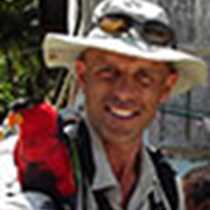The Weddell Sea
There are many reasons why Antarctica is an unusual destination for a modern traveler. For example, there are no scheduled flights to international airports. No customs or immigration procedures upon arrival. Neither local currency, nor a local language to struggle to understand, although some guests have been heard experimenting with speaking penguin.
However, there is an aspect of our language that is rarely heard away from the polar latitudes; the language of ice. During this voyage, we have seen ice in many of its beautiful and spectacular guises, each of which has a term to describe it. Accumulated snow on an island forms an ice cap. If the ice cap flows down a valley, a glacier is formed. If the glacier enters the sea, it is a tidewater glacier. When the glacier calves, the ice that breaks off will be an iceberg, a bergy bit, or brash ice depending on size. A large island of ice from a continental ice shelf starts life as a flat-topped tabular berg. I could go on.
Today we awoke in the Weddell Sea under blue skies surrounded by ice in myriad shapes and forms. We cruised past huge tabular bergs from the breakup of the Larsen Ice Shelf. On Bald Head and later on Paulet Island, we hiked along a shoreline strewn with bergy bits, by a bay choked with old and weathered icebergs. We have all tried to become fluent in this new language, but more than that, have learned to love the beauty of ice in all its forms.
There are many reasons why Antarctica is an unusual destination for a modern traveler. For example, there are no scheduled flights to international airports. No customs or immigration procedures upon arrival. Neither local currency, nor a local language to struggle to understand, although some guests have been heard experimenting with speaking penguin.
However, there is an aspect of our language that is rarely heard away from the polar latitudes; the language of ice. During this voyage, we have seen ice in many of its beautiful and spectacular guises, each of which has a term to describe it. Accumulated snow on an island forms an ice cap. If the ice cap flows down a valley, a glacier is formed. If the glacier enters the sea, it is a tidewater glacier. When the glacier calves, the ice that breaks off will be an iceberg, a bergy bit, or brash ice depending on size. A large island of ice from a continental ice shelf starts life as a flat-topped tabular berg. I could go on.
Today we awoke in the Weddell Sea under blue skies surrounded by ice in myriad shapes and forms. We cruised past huge tabular bergs from the breakup of the Larsen Ice Shelf. On Bald Head and later on Paulet Island, we hiked along a shoreline strewn with bergy bits, by a bay choked with old and weathered icebergs. We have all tried to become fluent in this new language, but more than that, have learned to love the beauty of ice in all its forms.




